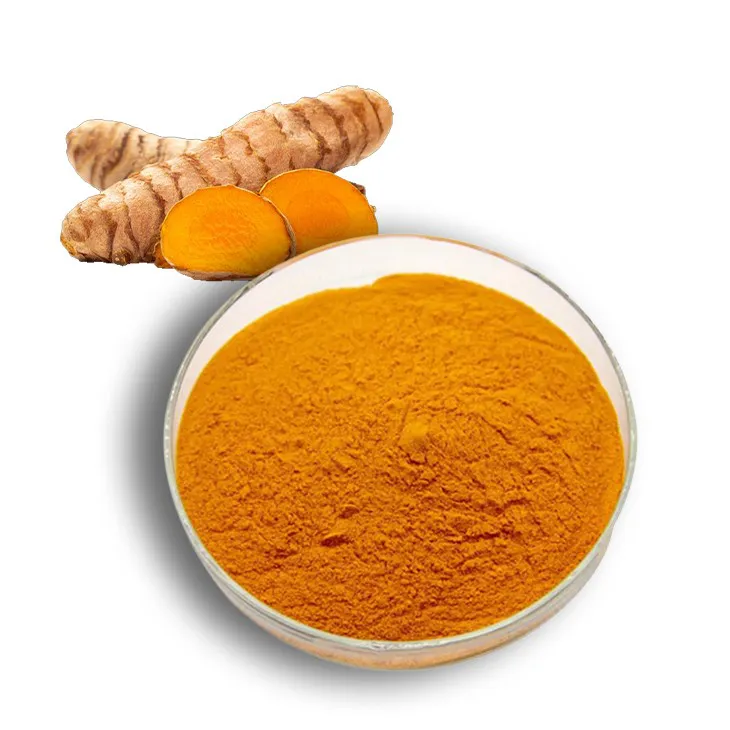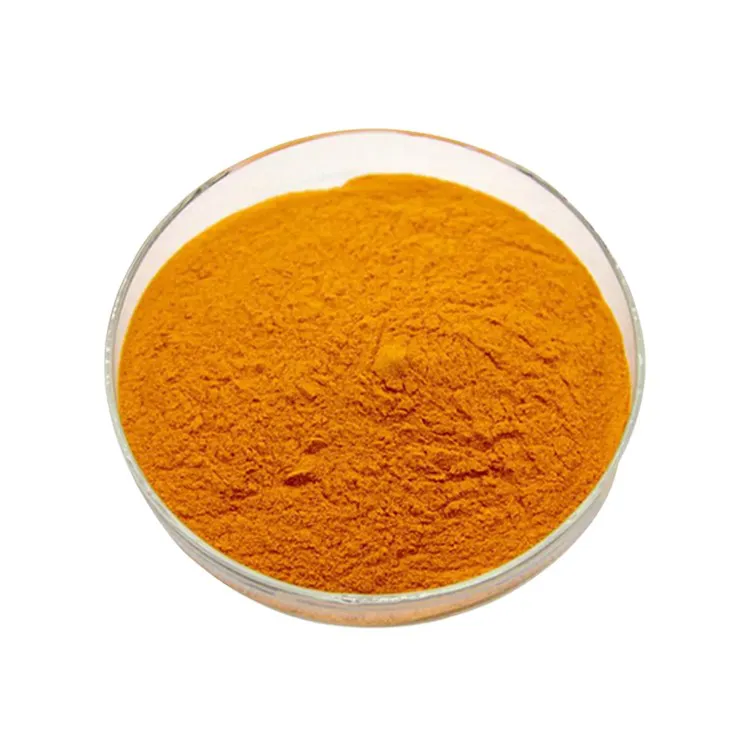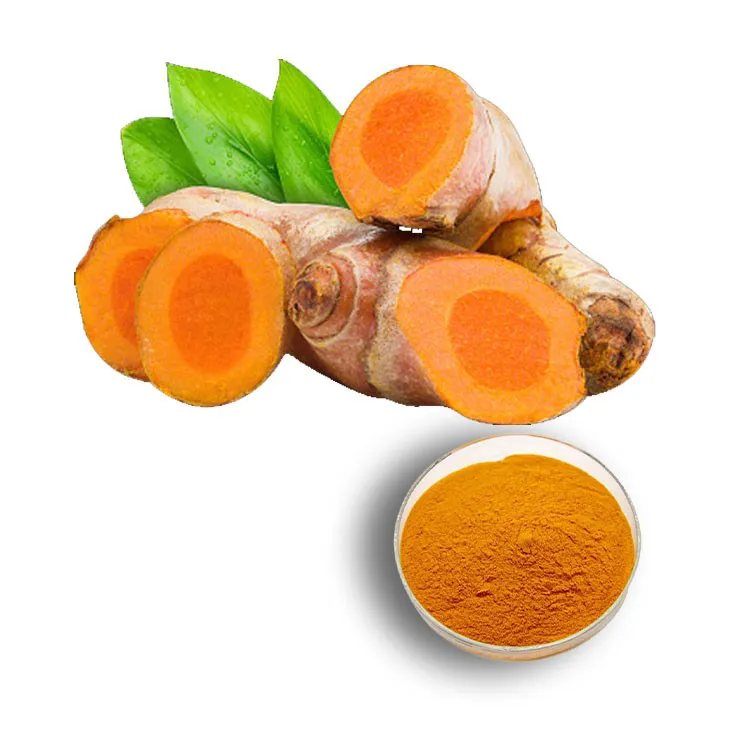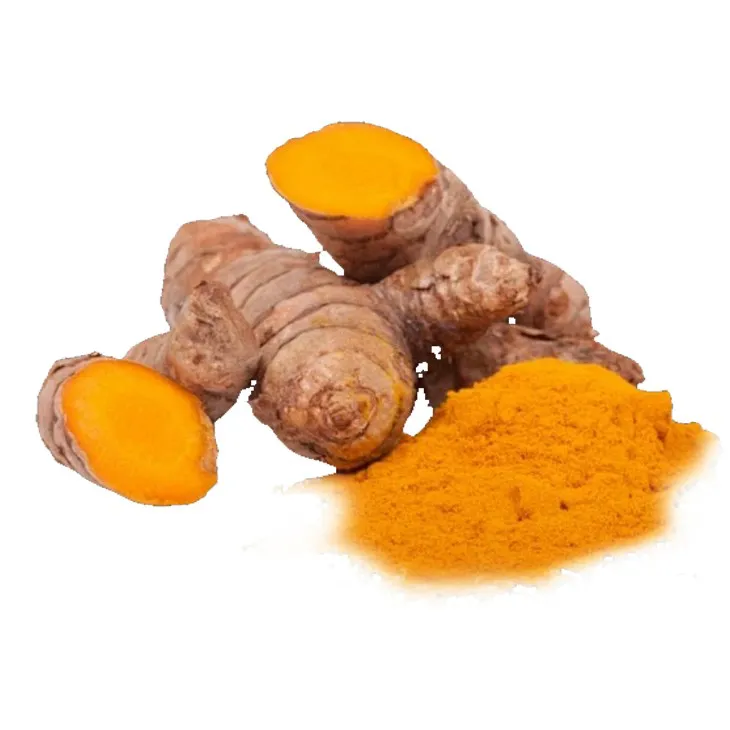- 0086-571-85302990
- sales@greenskybio.com
How to make powder with curcumin.
2024-11-27

1. Introduction
Curcumin is a natural compound known for its numerous health benefits. It is derived from turmeric, a spice commonly used in cooking. Making Curcumin powder allows you to have a concentrated form of this beneficial compound that can be used in various applications, such as dietary supplements, natural remedies, or in the food industry for adding color and flavor. In this comprehensive guide, we will explore the process of making high - quality Curcumin powder, starting from sourcing the raw materials to the final drying process.

2. Sourcing of Raw Materials
2.1 Selecting Turmeric
The first step in making curcumin powder is to source high - quality turmeric. When selecting turmeric, look for fresh, plump rhizomes. Turmeric is native to South Asia and is widely cultivated in countries like India, Indonesia, and Thailand. It is important to choose turmeric from reliable sources, such as organic farmers or trusted suppliers. Organic turmeric is preferred as it is less likely to contain pesticides or other contaminants.
2.2 Checking for Purity
Once you have obtained the turmeric, it is necessary to check for its purity. Some turmeric may be adulterated with other substances. You can do a simple visual inspection to ensure that the turmeric has a bright orange - yellow color, which is characteristic of good - quality turmeric. Additionally, you can also send a sample for laboratory analysis to confirm the presence of curcumin and the absence of harmful substances.

3. Extraction Methods
3.1 Traditional Solvent Extraction
One of the most common methods for extracting curcumin from turmeric is solvent extraction. This method involves using a solvent such as ethanol or acetone.
- First, grind the turmeric rhizomes into a fine powder.
- Then, soak the powder in the solvent in a sealed container. The ratio of turmeric powder to solvent can be around 1:5 (by weight).
- Allow the mixture to soak for a period of time, usually around 24 - 48 hours. During this time, the curcumin will dissolve into the solvent.
- After soaking, filter the mixture using a filter paper or a filtration device to separate the liquid (containing curcumin) from the solid residue.
3.2 Supercritical Fluid Extraction
Supercritical fluid extraction is a more advanced method. Carbon dioxide is often used as the supercritical fluid.
- The turmeric is placed in an extraction chamber.
- Carbon dioxide is pressurized and heated to reach its supercritical state. In this state, it has properties of both a liquid and a gas.
- The supercritical carbon dioxide is passed through the turmeric, selectively extracting the curcumin.
- The curcumin - rich fluid is then depressurized, which causes the carbon dioxide to return to its gaseous state, leaving behind the Curcumin Extract.
This method has the advantage of being more environmentally friendly compared to traditional solvent extraction as carbon dioxide is a non - toxic and easily removable gas.

4. Purification of the Extract
4.1 Filtration and Centrifugation
After extraction, the Curcumin Extract may still contain impurities. Filtration can be used again to remove any remaining solid particles. Centrifugation can also be applied to separate any heavier impurities from the curcumin - containing liquid.
- For filtration, use a fine - mesh filter or a membrane filter to ensure that even the smallest particles are removed.
- In the case of centrifugation, spin the sample at a high speed (usually several thousand revolutions per minute) for a set period of time (e.g., 10 - 15 minutes).
4.2 Chromatographic Purification
Chromatographic techniques can be used for more precise purification. Column chromatography is a common method.
- A column is filled with a stationary phase, such as silica gel.
- The Curcumin Extract is loaded onto the top of the column.
- A mobile phase, which can be a solvent mixture, is then passed through the column. Different components in the extract will move at different rates through the column based on their chemical properties, allowing for the separation of curcumin from other compounds.

5. Drying Process
5.1 Spray Drying
Spray drying is a popular method for drying curcumin extracts into powder form.
- The purified curcumin extract is first made into a fine liquid suspension or emulsion. This may involve adding a suitable carrier such as maltodextrin to improve the drying process.
- The liquid is then sprayed into a hot drying chamber through a nozzle. The hot air in the chamber causes the water or solvent in the liquid to evaporate rapidly.
- The dried curcumin powder is then collected at the bottom of the chamber. Spray drying results in a fine - textured powder with good flow properties, which is suitable for various applications such as in the production of capsules or as an ingredient in food products.
5.2 Freeze Drying
Freeze drying, also known as lyophilization, is another option.
- The curcumin extract is first frozen at a very low temperature (usually below - 40°C).
- Then, under vacuum conditions, the frozen water or solvent in the extract is allowed to sublime (change directly from solid to gas). This process is very gentle and helps to preserve the chemical structure and bioactivity of curcumin.
- The resulting freeze - dried curcumin powder is highly porous and has a long shelf - life. However, freeze drying is a more expensive process compared to spray drying.

6. Quality Control and Testing
6.1 Determining Curcumin Content
Once the curcumin powder is produced, it is important to determine the curcumin content. High - performance liquid chromatography (HPLC) is a commonly used method for this purpose.
- A sample of the curcumin powder is dissolved in a suitable solvent.
- The solution is then injected into the HPLC system. The HPLC separates the components in the sample based on their chemical properties and measures the amount of curcumin present.
6.2 Testing for Purity and Contaminants
In addition to curcumin content, the powder should be tested for purity and the presence of contaminants.
- Microbial testing can be done to check for the presence of bacteria, fungi, or other microorganisms. This is especially important if the powder is intended for use in dietary supplements or food products.
- Heavy metal testing should also be carried out to ensure that the powder does not contain excessive amounts of metals such as lead, mercury, or cadmium.
7. Storage and Packaging
7.1 Storage Conditions
Curcumin powder should be stored in a cool, dry place. Avoid exposure to direct sunlight, heat, and moisture. These factors can cause the degradation of curcumin over time. Airtight containers are recommended to prevent oxidation. If possible, store the powder in a refrigerator or a cool cellar to extend its shelf - life.
7.2 Packaging Materials
For packaging, use materials that are impermeable to air and moisture. Dark - colored containers are preferable as they can block out light. For small - scale production, amber - colored glass bottles with tight - fitting lids are a good option. For larger - scale production, laminated foil pouches or plastic containers with proper sealing can be used.
8. Conclusion
Making curcumin powder involves several steps, from sourcing high - quality turmeric to the final drying and quality control processes. By following the methods described in this guide, you can produce high - quality curcumin powder suitable for various applications. Whether you are interested in natural health products, the food industry, or simply want to have a pure form of curcumin for personal use, this guide provides you with the necessary knowledge to create your own curcumin powder. However, it is important to note that while curcumin has many potential health benefits, it should not be used as a substitute for medical advice or treatment.
FAQ:
What are the suitable raw materials for making curcumin powder?
Typically, turmeric is the main raw material for making curcumin powder. High - quality turmeric roots are preferred. They should be fresh, free from mold and other contaminants. The curcumin content in different varieties of turmeric may vary, so it is important to select the appropriate turmeric variety to ensure a sufficient yield of curcumin during the extraction process.
What are the common extraction methods for curcumin?
One common method is solvent extraction. Organic solvents like ethanol or acetone can be used. The turmeric is ground into a fine powder first, and then soaked in the solvent. After a period of time, the solvent containing the dissolved curcumin is separated from the solid residue. Another method is supercritical fluid extraction, which uses supercritical carbon dioxide. This method is more environmentally friendly and can produce high - purity curcumin, but it requires more specialized equipment.
How to ensure the drying process is effective for making curcumin powder?
Low - temperature drying is often recommended. High - temperature drying may cause the degradation of curcumin. Vacuum drying can also be used. It helps to remove moisture more quickly while reducing the exposure of curcumin to oxygen, which can prevent oxidation. The drying time should be sufficient to ensure that the moisture content in the powder is very low, usually less than 5% to ensure the stability and quality of the curcumin powder.
What are the quality control measures during the production of curcumin powder?
Testing for curcumin content is crucial. High - performance liquid chromatography (HPLC) can be used to accurately measure the curcumin concentration. Purity analysis should also be carried out to check for the presence of impurities. Microbiological testing is necessary to ensure that the powder is free from harmful bacteria, molds, and yeasts. Additionally, sensory evaluation, such as checking the color and odor of the powder, can also be part of the quality control process.
Can curcumin powder be made at home?
While it is possible to make a simple form of curcumin powder at home, it is challenging to achieve high - quality and high - purity results. At home, one can start by drying and grinding turmeric roots. However, without proper extraction and purification equipment, the resulting powder may have a relatively low curcumin content and may contain other substances from the turmeric. Moreover, safety precautions need to be taken when using solvents at home if solvent extraction is attempted.
Related literature
- Title: Optimization of Curcumin Extraction from Turmeric"
- Title: "The Drying Process and Its Impact on Curcumin Powder Quality"
- Title: "Quality Control in Curcumin Powder Production"
- ▶ Hesperidin
- ▶ citrus bioflavonoids
- ▶ plant extract
- ▶ lycopene
- ▶ Diosmin
- ▶ Grape seed extract
- ▶ Sea buckthorn Juice Powder
- ▶ Beetroot powder
- ▶ Hops Extract
- ▶ Artichoke Extract
- ▶ Reishi mushroom extract
- ▶ Astaxanthin
- ▶ Green Tea Extract
- ▶ Curcumin Extract
- ▶ Horse Chestnut Extract
- ▶ Other Problems
- ▶ Boswellia Serrata Extract
- ▶ Resveratrol Extract
- ▶ Marigold Extract
- ▶ Grape Leaf Extract
- ▶ blog3
- ▶ blog4
-
High - quality kidney bean extract products.
2024-11-27
-
The best aged garlic extract on the market.
2024-11-27
-
How to make powder with L - arginine.
2024-11-27
-
Certified organic hawthorn extract.
2024-11-27
-
Bulk purchase of mulberry leaf extract.
2024-11-27
-
Wholesale Suppliers of Eyebright Extract.
2024-11-27
-
Kupilu Extract
2024-11-27
-
Artichoke Extract
2024-11-27
-
Tamarind extract powder
2024-11-27
-
Hops Extract
2024-11-27
-
Dandelion Root Extract
2024-11-27
-
Lemon Juice Powder
2024-11-27
-
Kelp Extract Powder
2024-11-27
-
Bamboo Leaf extract
2024-11-27
-
Ginger Extract
2024-11-27
-
Green Tea Extract
2024-11-27





















